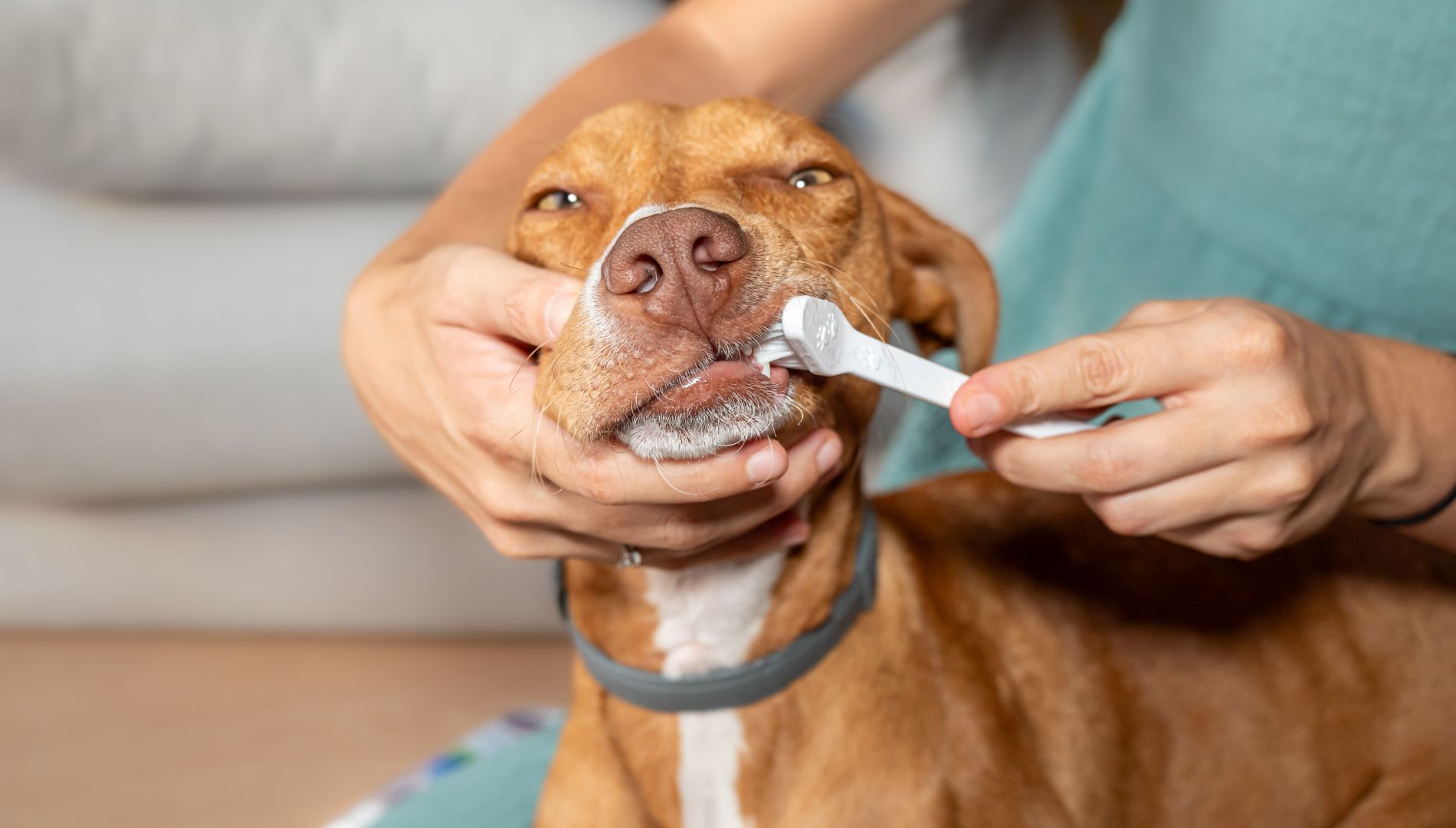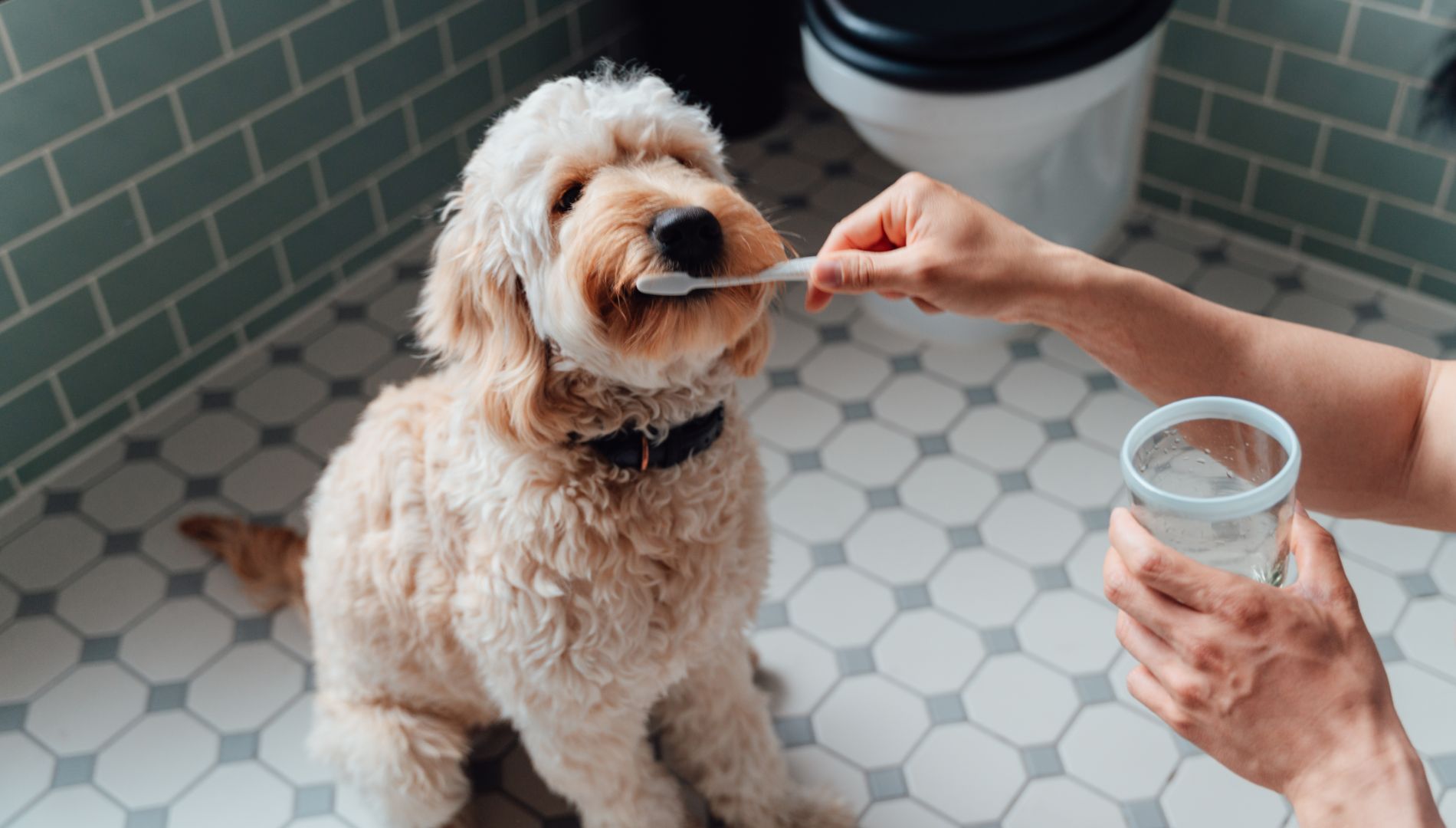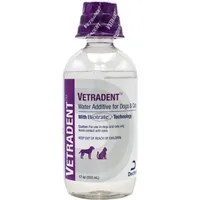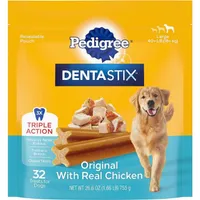Wondering how often to brush a dog’s teeth? Here’s what a vet had to say…
How often to brush a dog’s teeth is a query many owners ponder. Read on to find out all about keeping your canine companion's pearly whites sparkling

Have you been contemplating how often to brush your dog’s teeth? You might be surprised to learn that the answer is rather frequently. Like humans, dogs get plaque on their teeth, which can cause issues when it builds up. For this reason, dog owners should ensure they have the best toothbrush for dogs and make brushing their pup’s teeth part of their normal routine.
From picking out the best tools for the job to learning how to brush a dog’s teeth, getting started is often the hardest part. The frequency at which a dog’s teeth are brushed can have a huge impact on how effective toothbrushing is – keep reading to learn more about how often to brush your dog’s teeth.
Arm & Hammer for Pets Tartar Control Kit for Dogs
This kit comes complete with all the essentials you’ll need to make sure your dog’s teeth have the best home care. It comes with a double-headed brush, finger brush and plaque-fighting enzymatic toothpaste.
Why should I brush my dog’s teeth?
Dental disease is one of the most common diseases seen by vets. It is estimated that at least two-thirds of dogs have some degree of periodontal (gum) disease by the time they reach three years of age. Periodontal disease is especially prevalent in small dogs and brachycephalic (flat-faced) breeds, such as pugs and French Bulldogs.
Periodontal disease occurs when plaque, a sticky film containing bacteria, builds up and mineralizes into calculus, also known as tartar. Calculus acts as a surface for bacteria to accumulate and multiply, thus resulting in gingivitis or inflammation of the gums. This can lead to pockets forming between the gums and affected teeth, loose teeth, and eventually tooth loss. Detecting and treating periodontal disease early can prevent oral pain as well as issues in organs such as the heart, liver, and kidneys if bacteria enter the bloodstream and travel to them.
The American Animal Hospital Association (AAHA) recommends that an oral hygiene routine is started when a puppy’s adult teeth come in to prevent or delay the development of periodontal disease.
Although there are several products on the market to help prevent the buildup of plaque, toothbrushing is the most effective technique. A toothpaste specifically formulated for dogs should always be used, as they are safe to be swallowed unlike human toothpastes, which contain ingredients that can cause tummy upset in dogs or even be toxic, such as xylitol.
Is it OK if I don’t brush my dog’s teeth?
Some dogs are very reluctant to have their teeth cleaned. If this sounds like your dog, how often to brush dog teeth might not be your first concern – instead you’ll wonder how to clean your dog’s teeth without brushing! There are things you can so, from switching his diet to feeding the best dental chews and even using dog mouth wash.
Get the best advice, tips and top tech for your beloved Pets
In an ideal world, a dog’s teeth should be brushed twice a day to keep dog teeth clean and healthy because plaque buildup can occur within hours after a meal. This is not feasible for most owners, however, and how often to brush dog teeth comes down to what’s realistic. Bear in mind, though. it typically takes 24–48 hours for plaque to harden into calculus, so toothbrushing is recommended every day or every other day at a minimum – the more frequent, the better!
Toothbrushing should be performed for at least 30 seconds on each side of the mouth, focusing on the gumline and not forgetting the back teeth, which tend to accumulate plaque and calculus the fastest.
Greenies Original Regular Natural Dental Care Dog Treats
These tasty treats have a chewy texture and come in a variety of flavors. They help clean your dog’s teeth, maintain healthy gums and freshen their breath.
Dechra Vetradent Water Additive for Dogs and Cats
This easy-to-use water additive contains zinc chloride and citric acid to reduce bad breath and restore pH balance. It is odorless, tasteless and colorless.
Pedigree Dentastix Large Dog Dental Treats
These treats offer triple action dental care by freshening breath, cleaning teeth and removing the build-up of plaque and tartar.
How often to brush dog teeth: is once a week enough?

Because of how quickly plaque mineralizes into calculus, brushing only once a week may not be effective at preventing periodontal disease in dogs. Although a 2021 study published in Animals (conducted on 160 racing greyhounds) found that while both daily and weekly toothbrushing significantly reduced calculus buildup, only daily brushing was able to reduce gingivitis, which can be painful and lead to the progression of dental disease.
Another study on beagles published in the Journal of Veterinary Dentistry in 2015 found that brushing daily or every other day significantly reduced the severity of gingivitis and the accumulation of plaque and calculus compared to brushing weekly. It is therefore recommended to brush a dog’s teeth at least every other day, if not daily.
If you are unable to brush your dog’s teeth this frequently for whatever reason, the addition of other types of plaque-preventative products can help to keep plaque at bay. These include the best dental chews for dogs, oral gels, wipes, water additives, and veterinary dental diets.
The Veterinary Oral Health Council (VOHC) provides a list of products that have been scientifically proven to prevent the accumulation of plaque and calculus. You should also consider alternatives to toothbrushing if your dog tries to bite you when you go near them with a toothbrush – your safety comes first.
What time of day should I brush my dog's teeth?
Although you may see the most benefits with brushing your dog’s teeth right after mealtime, it is more important that the timing is consistent from day to day so that toothbrushing can become a part of your dog’s daily routine.
Toothbrushing may be easiest when your dog’s energy is low, like after a walk, since this will be less stressful for both you and them, but the time of day is unlikely to make a significant difference in your dog’s oral health as long as toothbrushing is done regularly.
Is it too late to start brushing my dog’s teeth?
It’s never too late to start brushing your dog’s teeth! Training dogs to tolerate toothbrushing tends to be quicker and easier in younger dogs, but toothbrushing is beneficial for dogs of all ages.
That being said, toothbrushing only works against plaque, not calculus once it has formed. The only way to get rid of calculus is by doing a dental cleaning using specialized tools, which must be done under general anesthesia at your vet clinic. In addition, dogs who have moderate to severe gingivitis may find toothbrushing painful, in which case it is best to wait to start brushing until after they have had a dental cleaning.
If your dog shows signs of dental disease such as bad breath, yellow or brown discoloration of the teeth, obvious calculus, red or bleeding gums, loose teeth or missing teeth, excessive drooling, difficulty chewing, dropping food, or a sensitive or painful mouth, they will most likely benefit from having a dental cleaning.
Once periodontal disease has progressed to a certain point, it cannot be reversed and teeth may require extraction to make your dog more comfortable. After an oral examination, your vet can get an idea of the extent of your dog’s dental disease and provide answers to any questions you might have around how much does dog teeth cleaning cost if needed.

Bethany is an experienced writer who has been writing across the pets and equestrian sector for eight years.
Dr. Diana Hasler graduated with distinction from the University of Edinburgh Royal (Dick) School of Veterinary Studies in 2018. She has experience working as a small animal veterinarian in general practice, where she has treated many dogs, cats, rabbits, and rodents. She has also recently branched out into the field of medical communications, doing freelance work as a medical editor and writer. Dr. Hasler has been Postdoctoral Research Fellow at Michigan Medicine since 2023, where she is a Laboratory Animal Medicine Resident.
- Bethany StoneFreelance Writer





